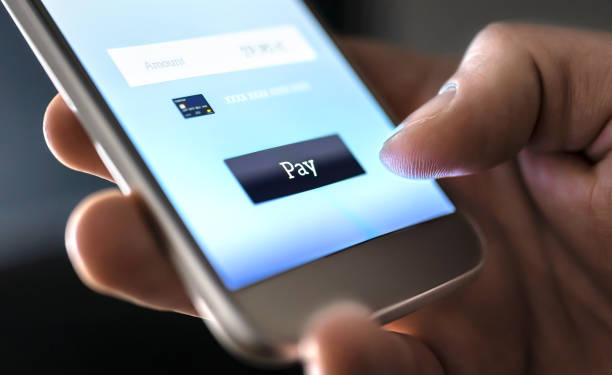Liam Stone had always been an ambitious but cautious soul. At 28, he was balancing a typical 9-to-5 job at a tech support company with a burgeoning interest in the world of cryptocurrency. Bitcoin was not a foreign concept to him, yet it had always seemed risky, something only venture capitalists or eccentric tech wizards would dare to touch. But 2017 changed all of that for him.
Chapter 1: Discovering Bitcoin
It was late 2016 when Liam first heard a serious discussion about Bitcoin in his office. One of his co-workers, Derek, who often wore T-shirts with tech slogans, had thrown out an intriguing line: “Bitcoin’s going to hit $10,000 one day. Mark my words.” At that time, Bitcoin was hovering around $900, which seemed outrageous to most of them. But Derek’s words lingered with Liam.
That night, he stayed up reading about Bitcoin’s origin, fascinated by how it emerged after the 2008 financial crisis. As he delved deeper, he stumbled upon other cryptocurrencies, notably Ethereum, a newcomer with a more sophisticated blockchain promising “smart contracts” that could change industries. Ethereum wasn’t just a currency; it was a platform. And that potential hooked Liam even more than Bitcoin’s promise of being a “digital gold.”
Chapter 2: Taking the First Step with Coinbase
By early 2017, Coinbase was a growing name in the crypto space, and after much deliberation, Liam decided to make his first investment there. With shaky fingers, he transferred $500 to his account and purchased Bitcoin and a small amount of Ethereum.
Over the coming months, his $500 started to grow, following Bitcoin’s meteoric rise to $2,000, then $5,000, and finally to $10,000 by the end of the year. At one point, Liam’s balance showed a staggering $10,000. It was unreal. The market was in full bull run mode, and excitement was everywhere—from Reddit forums to mainstream financial news.
Chapter 3: Navigating the Highs and Lows
Liam was elated but cautious, aware that what went up could come crashing down. He had read about the volatility of crypto markets, so when Bitcoin retraced after reaching its all-time highs, he held firm. Ethereum had surged too, mostly due to the backing of big companies like IBM and Microsoft experimenting with blockchain applications. For Liam, the promise of “decentralized finance” or “DeFi” was the future.
Chapter 4: The Bull Run Begins
As the months rolled on, 2017 transformed into a year of explosive growth in crypto. Bitcoin’s value leapt to unimaginable heights, passing $15,000 by December and then soaring toward $20,000. Liam felt like he was living in a dream. Ethereum was also rising quickly, driven by its smart contract applications and adoption by projects far and wide.
Liam’s Coinbase portfolio grew more than he had ever thought possible. His original $500 investment had swelled into tens of thousands. Each day, he watched his balance rise as though he’d planted seeds that turned into towering money trees. He kept tabs on crypto news, obsessively checking every headline, from tech publications to mainstream media, all suddenly ablaze with cryptocurrency talk.
It felt like a new world was being built, and he was part of it.
Chapter 5: Meeting the Giants – Binance and the Altcoins
As 2018 approached, Liam’s curiosity expanded beyond Bitcoin and Ethereum. Binance, a rising platform with a reputation for trading a huge variety of “altcoins” (cryptocurrencies other than Bitcoin), caught his attention. Binance’s founder, Changpeng Zhao, or “CZ” as the community called him, had quickly become a respected figure in crypto. The exchange allowed users to trade hundreds of cryptocurrencies, from Litecoin to Ripple and emerging tokens that promised various forms of digital revolution.
So, Liam took another calculated risk and signed up for a Binance account, drawn in by the low transaction fees and the allure of undiscovered gems. The first altcoin he bought was Cardano (ADA), a promising new blockchain developed by Charles Hoskinson, one of the co-founders of Ethereum. Cardano’s approach to security and scalability fascinated him, and he saw it as a project with real potential for mainstream adoption.
Each time he bought an altcoin, he treated it like an investment in a start-up. By diversifying his portfolio, he hoped to hedge his bets, believing that even if Bitcoin and Ethereum struggled, some of these new technologies might succeed.
Chapter 6: The Crash and Its Lessons
The euphoria of 2017 quickly faded as the crypto market crashed in early 2018. Liam’s heart sank as he saw Bitcoin tumble from nearly $20,000 down to $12,000, then to $8,000, and eventually below $4,000. Ethereum and his altcoins followed suit, shedding value at an alarming rate. Within weeks, he watched half of his portfolio evaporate.
It was the first time Liam truly understood the volatility of the crypto market. Panic washed over him as he scrolled through forums, seeing other investors selling off their assets, desperate to cut their losses. For days, he couldn’t bring himself to check his portfolio. But after some time, he realized this was part of the journey. Bitcoin had crashed before, and it had always found a way to recover. He forced himself to focus on the long-term vision.
Chapter 7: Researching and Sticking to the Plan
Over the next year, Liam doubled down on research. He read about blockchain applications, attended virtual conferences, and even started experimenting with small investments in DeFi platforms built on Ethereum. By mid-2019, projects like Uniswap and Aave were gaining traction, introducing new ways to lend, borrow, and trade without traditional banks. Liam saw this as the next phase of financial evolution and felt his patience paying off.
As the crypto market slowly rebounded, he diversified even further. He added Chainlink (LINK), a decentralized oracle network, to his portfolio. He also invested in Polkadot (DOT), which aimed to connect different blockchains. Big companies like Fidelity and Square were now dabbling in crypto, signaling to him that the future was inching closer.
Liam’s balance crept upward again, and by the end of 2020, it seemed the bull market was on its way back.
Chapter 8: The 2021 Bull Run and Striking Gold
When 2021 hit, the market exploded again. Bitcoin crossed the $30,000 mark and kept climbing, reaching over $60,000 by April. Ethereum also surged, spurred by the rise of NFTs (non-fungible tokens) and DeFi projects. Celebrities, athletes, and big companies jumped on the bandwagon, and “crypto” was no longer a fringe term.
Liam’s portfolio had never been higher, and this time, he was ready. He decided to cash out a portion of his gains, enough to secure his initial investment plus a comfortable profit, while still keeping a large share in crypto. He knew there could be another crash, but he was prepared to ride out the highs and lows.
With his newfound wealth, he left his tech job and started consulting on blockchain projects. He became part of the community he had once watched from the sidelines, and his story inspired others. Liam was a believer in crypto’s future, but now he was also proof of its power to change lives.
Chapter 9: The Ripple Effect – Friends, Family, and Fame
By mid-2021, Liam had not only secured financial stability but also earned the reputation of a “crypto expert” among his family, friends, and former colleagues. He found himself inundated with messages from people curious about Bitcoin, Ethereum, and his latest investments on Binance. They wanted to know how he’d done it, and many were eager to jump in, hoping to replicate his success.
His story of transformation spread quickly within his circles, sparking a ripple effect. Cousins, old college friends, even his parents, all wanted a piece of the action. But while he loved sharing his knowledge, he knew the stakes were high. He cautioned them all: “Crypto can change your life, but it’s not a guaranteed win. Remember, it goes up and down—sometimes sharply.”
Despite his warnings, several friends and family members dove in, investing small amounts and getting swept up in the excitement. For the first time, he felt the weight of influence and responsibility, knowing that his advice could make or break someone’s savings.
Chapter 10: The Challenges of the Crypto Lifestyle
With newfound wealth came new challenges. As much as he loved crypto’s potential, Liam also became acutely aware of the mental strain that came with tracking prices, monitoring the news, and weathering market volatility. By mid-2021, Bitcoin and Ethereum were reaching historic highs, but as always, fears of a crash loomed.
The days were a mix of exhilaration and anxiety. There were times he found himself awake at odd hours, eyes glued to his phone, as prices moved up or down in unpredictable patterns. He noticed the toll it was taking on his mental health, and he decided to make some changes.
Liam set limits for himself. He wouldn’t check his portfolio after 6 p.m., and he started meditating each morning to help keep his mind clear. He also dedicated time to study blockchain technology in depth, diving into whitepapers and exploring coding platforms like GitHub, realizing that his success would be most sustainable if he kept learning.
With these new routines, he found a balance between staying informed and staying grounded.
Chapter 11: Partnerships with Big Crypto Companies
The bull run of 2021 brought big players into the field. Companies like MicroStrategy, Tesla, and Square announced large Bitcoin purchases, which sent shockwaves through the market. Traditional financial institutions like JPMorgan and Goldman Sachs started offering crypto investment options, and Coinbase’s direct listing on NASDAQ was a major milestone.
For Liam, these moves confirmed what he had believed for years: that crypto was becoming mainstream. Inspired by the trend, he started networking with others in the industry. He attended webinars and connected with people from firms like Kraken and Gemini. His knowledge and experience quickly earned him a consulting role with a start-up exploring decentralized finance, or “DeFi,” solutions for traditional banking challenges. The project aimed to create a platform where users could lend and borrow using smart contracts, without needing a bank.
Working alongside passionate crypto enthusiasts, he found himself immersed in discussions about Web3, decentralized governance, and the potential for blockchain to reshape industries. This consulting role brought in another steady income stream, allowing him to deepen his understanding of the technology he had profited from so greatly.
Chapter 12: Another Market Crash – Surviving the Storm
In the latter half of 2021, however, a familiar shadow crept over the market. News of regulatory crackdowns in China sent Bitcoin into a downward spiral, with Ethereum and other coins following suit. Headlines screamed of “bubbles bursting” and “crypto winter.” This time, though, Liam was prepared.
Although he lost a significant portion of his portfolio’s value during the crash, he had taken profits at the market’s peak and reinvested some of his earnings in less volatile assets. Watching the crash unfold, he felt calm—years of experience had taught him that the market always had cycles. He reminded himself of the long-term promise of the technology and saw the dip as an opportunity to buy more of his favorite assets at a discount.
When friends and family reached out, panicked about their shrinking investments, he encouraged them to stay patient. “Remember, this is the game we signed up for,” he told them. “If you believe in the technology, then hold on. Crypto isn’t going anywhere.”
Chapter 13: Expanding into NFTs and the Metaverse
By early 2022, Liam was looking for new avenues within the crypto world. Non-fungible tokens, or NFTs, had started making waves in 2021, but now they were exploding. From digital art to virtual real estate, NFTs offered unique digital ownership, and platforms like OpenSea and Rarible were buzzing with activity. Meanwhile, “metaverse” projects like Decentraland and The Sandbox were emerging as virtual worlds where people could own, build, and trade.
Intrigued by the possibilities, Liam decided to experiment with NFTs. He purchased his first digital art piece and even bought a plot of virtual land in The Sandbox, betting that the metaverse would become a new frontier for digital interaction. Celebrities and big brands were getting involved too, which convinced him this trend was more than a passing fad.
Within months, the value of his NFT investments multiplied. His digital artwork was in high demand, and his virtual land was attracting interest from brands looking to establish a presence in the metaverse. Liam felt like a pioneer once again, riding the wave of a new digital frontier.
Chapter 14: The Legacy of Wealth and Wisdom
As the years passed, Liam’s success in crypto continued to evolve. His portfolio was a balanced mix of Bitcoin, Ethereum, altcoins, and NFTs, with stakes in several decentralized finance projects. But beyond the wealth, Liam had found something more meaningful: a sense of purpose.
He started volunteering to teach others about financial literacy and crypto basics, working with nonprofits and hosting workshops. His goal was to empower others to make informed decisions, especially people in underserved communities who might not have access to traditional banking but could benefit from decentralized finance.
Liam also began writing a blog, sharing his experiences and insights on the ever-evolving world of crypto. His story of transformation, from a regular tech worker to a crypto millionaire, became a source of inspiration to thousands. He no longer felt the need to chase quick profits, knowing that he had secured his future. Instead, he wanted to give back, using his knowledge and success to help others find their own paths in the digital world.






